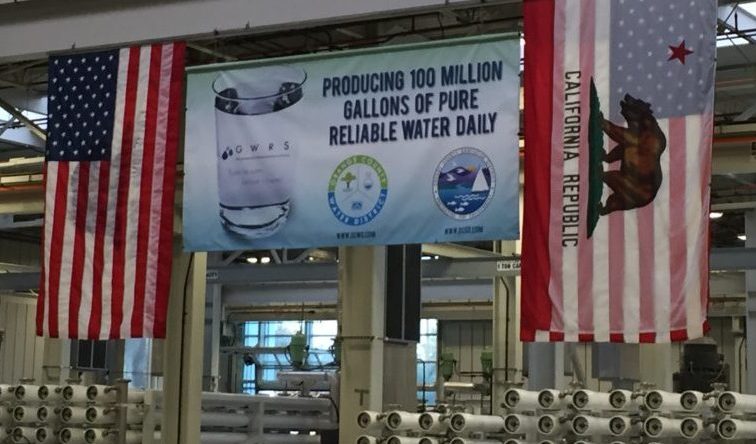
Governor Brown’s signing of Assembly Bill 574 (Quirk-Hayward) into law is the starting pistol for the race to the top. Following California’s drought, a quiet competition is now underway to see who will emerge as the leader in water innovation. Which community will be drought-resilient? Who will provide their community with reliable, inexpensive water, even during a crisis?
California Coastkeeper Alliance and WateReuse California introduced AB 574, which now law, will lead to a race to the top to determine which California community will be the first pioneer to achieve direct potable reuse. There is no silver bullet to becoming drought-resilient, but direct potable reuse provides communities with considerable security in an uncertain hydrologic future.
Direct potable reuse is the purification of wastewater to such a high quality that it is safe to distribute directly into a drinking water system. In 2014, more than 1.2 billion gallons of treated wastewater per day was discharged into California’s coastal waters and estuaries. Direct potable reuse would turn that waste into a reliable water resource that is cheaper and less energy-intensive than other supply options.
California communities want the opportunity to become the first to achieve direct potable reuse. Direct potable reuse is largely drought-proof, cheaper than opting for ocean desalination, and would require less infrastructure than non-potable reuse. Orange County, the historic pioneer in potable reuse, wants to continue its leadership legacy. San Diego is already planning a project that would distribute potable reuse into reservoirs, but would prefer to distribute it directly into the drinking water system because it would be less expensive due to less pumping. Los Angeles has the greatest potential for turning treated discharges into direct potable reuse. And with the goal of overtaking Orange County, Santa Clara has already begun planning for direct potable reuse.
Regardless of the local desire for this pathway to water security, communities are hesitant to move forward on direct potable reuse projects because California does not have permitting regulations in place. Without a regulatory framework, communities are not afforded the certainty that a proposed project is viable, and are thus forced to consider more expensive and environmentally harmful water supply options such as ocean desalination.
Despite efforts by California Coastkeeper Alliance and WateReuse California, the state stopped short of committing to a target date for adopting regulations that would provide the regulatory certainty communities must rely upon in planning. We introduced AB 574 to provide communities with that regulatory certainty; and now Governor Brown’s signature ensures that communities can now begin planning for direct potable reuse in the near future.
Read Assemblymember Quirk’s press release.
Learn more about California Coastkeeper Alliance’s leadership on recycled water.

Executive Director Sean Bothwell leads CCKA’s initiatives to fight for swimmable, fishable, and drinkable waters for all Californians.



